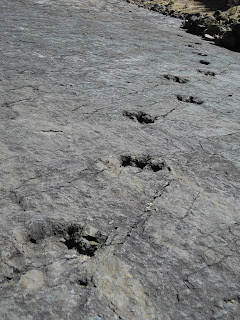 |
| Coca plants growing in Coroico in the Yungas |
After a short stint back in La Paz I headed to Copacabana on the Bolivian side of lake Titicaca. Copa itself is nothing particularly special, a small resort tourist town, but it had cheap hostels, great fresh fish, and nice views over the lake.
 |
| Copacabana plaza |
We spent two nights in a basic hostel in the community of Yumani and I trekked pretty much all around the island, getting frequently lost and seeing as many Incan ruins and landmarks as I could find (nothing was signposted). One was helpfully pointed out by a local as being in a neighbour's garden!
 |
| Ruins of Chicana, known as 'the labyrinth' |
Almost didn't make it back before it got dark due to some very dodgy directions from an elderly local (or at least my very dodgy Spanish) but just made it back with 10 mins to spare. A lucky escape as I was genuinely preparing to knock on a strangers door.
After a rough boat trip back to Copacabana and a final night in Bolivia, I sadly said goodbye and crossed the border into Peru.


















